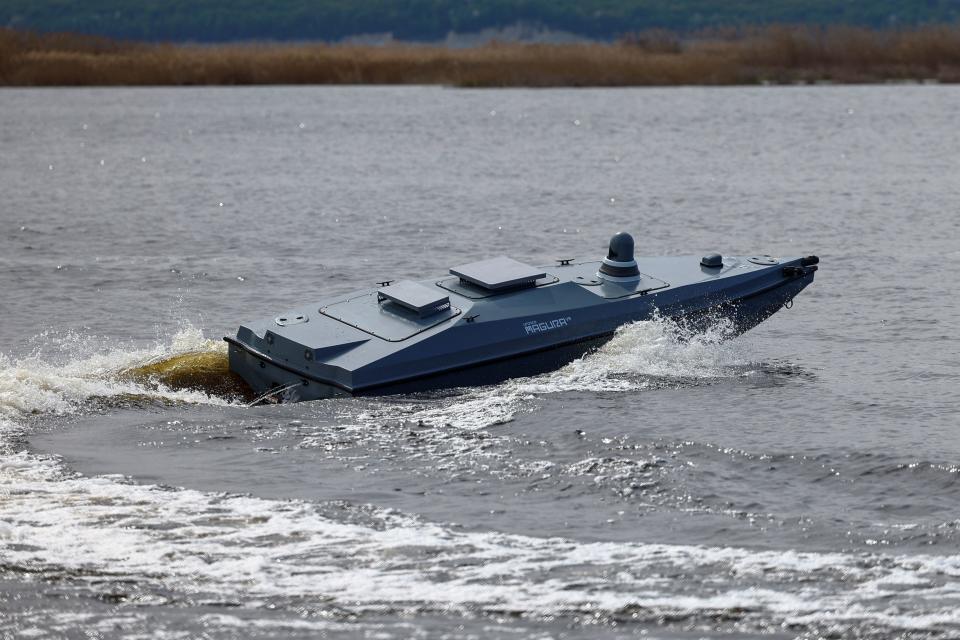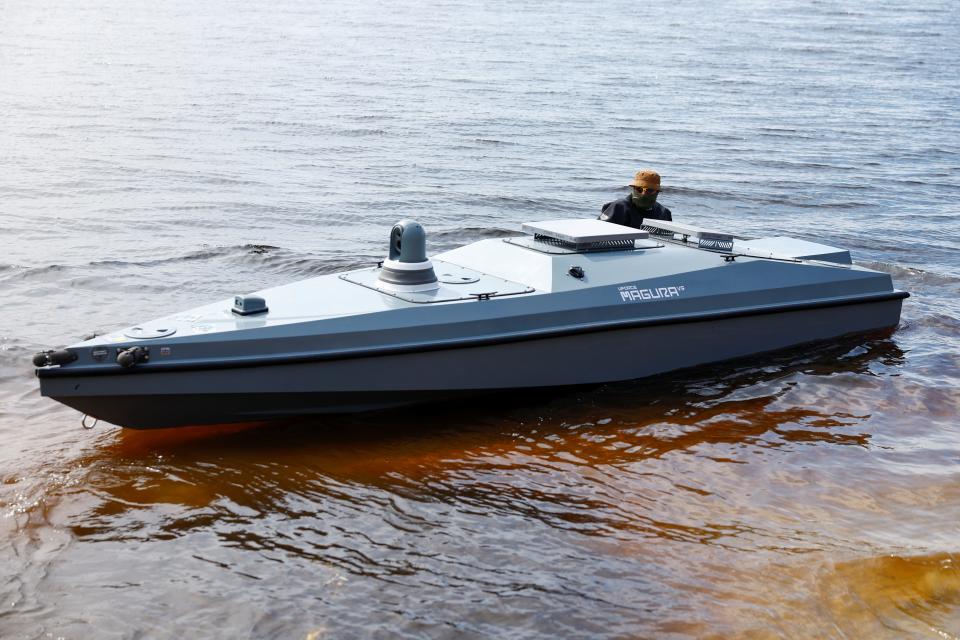Ukraine's new drone boats are armed with heat-seeking missiles to scare off Russian aircraft, commander says
Ukraine has modified its naval drones to carry R-73 heat-seeking missiles.
It's the latest innovation for the country's formidable fleet of uncrewed systems.
The upgraded naval drones will be able to target Russian aircraft patrolling the Black Sea.
Ukraine has armed its naval drones with heat-seeking missiles, giving the systems a major upgrade that will allow them to target Russian aircraft patrolling around the Black Sea.
An unspecified number of Magura V5 naval drones have been modified to carry R-73 short-range air-to-air missiles, the Ukrainian Main Directorate of Intelligence, an arm of the country's defense ministry, confirmed on Monday, marking another noteworthy innovation for Kyiv's fleet of uncrewed systems.
These innovative drones were first spotted in early May and have already been used during combat operations in the Black Sea, the HUR said in a statement shared to the Telegram messaging app, adding that the systems have become "a serious factor of fear and risk" for Russian aircraft.
"Such developments are effective — Russians are very afraid of them," the commander of "Group 13," a special HUR unit dedicated to operating the naval drones, said in a recent interview.

"When they see them, they are afraid to even fly up. And the uniqueness is that no one has such a thing," the commander said in the interview, which the HUR shared to Telegram. "This weaponry has already been installed, and it will produce results."
The R-73, known by NATO as the AA-11 Archer, is a Soviet-era missile that has infrared homing technology and is typically carried by Sukhoi and MiG fighter jets.
Outfitting a naval drone with such weaponry is an unusual development, as the speedboat-like systems have historically been rigged with explosives and used to go after Russia's Black Sea Fleet, but the addition is likely to make these combat systems more dynamic during a mission.
Moscow, largely unable to stop Ukraine's unrelenting naval drone attacks, has turned to combat aircraft to patrol the waters and protect its warships. Now, the naval drones can use their R-73 missiles to defend themselves from Russian aerial attacks and provide cover for other uncrewed systems, thus reducing their vulnerability to the threats from above.

The R-73 missile upgrade represents another innovation for Ukraine's formidable naval drone program, which has given Kyiv a way to take on the Black Sea Fleet even though it doesn't have a proper navy of its own.
Ukraine has also outfitted its Sea Baby drones — another type of homemade uncrewed system — with Grad rockets to hit targets on land.
"Naval drones, primarily the Magura V5, have become such an asymmetric response that the enemy still cannot catch up to," Andrii Yusov, a representative of the HUR, told private Ukrainian television channel ICTV.
Last week, US Defense Secretary Lloyd Austin said that Ukraine has sunk, destroyed, or damaged at least 24 Russian vessels in the Black Sea. Kyiv has relied on its fleet of naval drones, as well as long-range missiles, to inflict these losses.
Drone warfare has been one of the defining elements of the war in Ukraine. Beyond Kyiv's uncrewed success in the Black Sea, unmanned systems have been used in both surveillance and attack roles in the air and on the ground.
Read the original article on Business Insider

